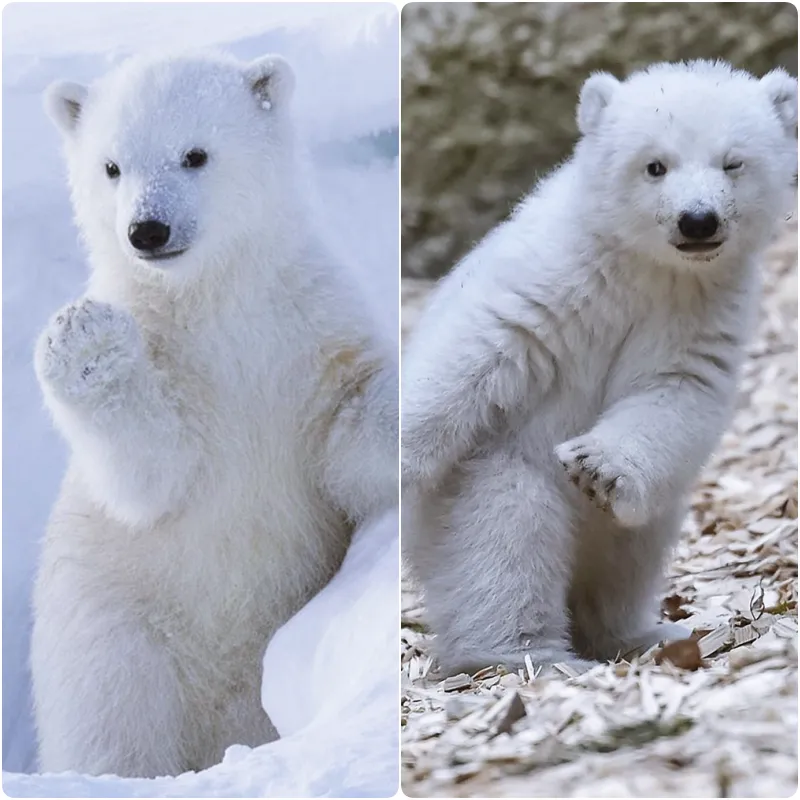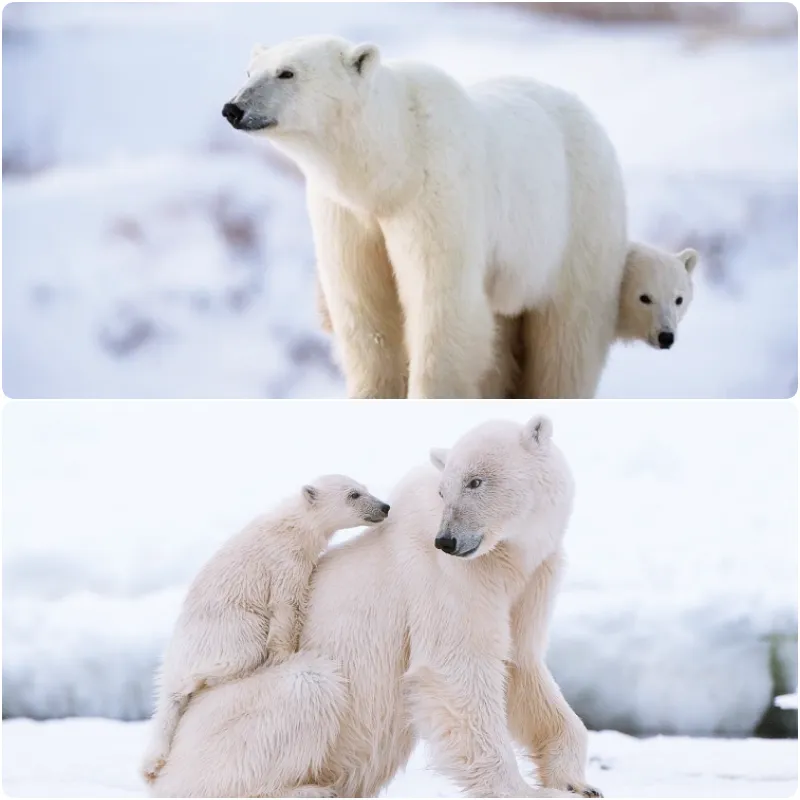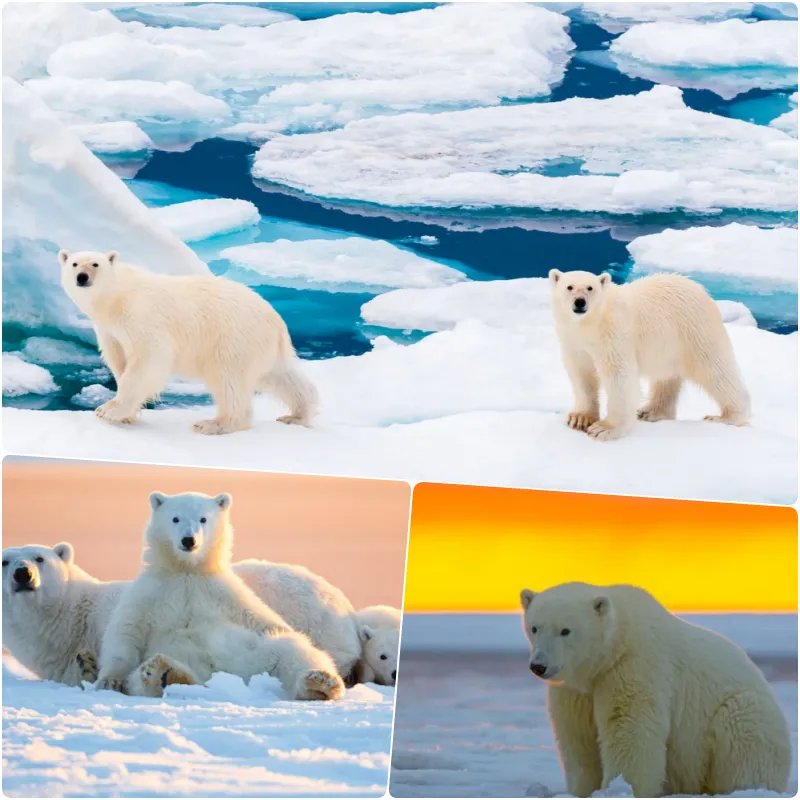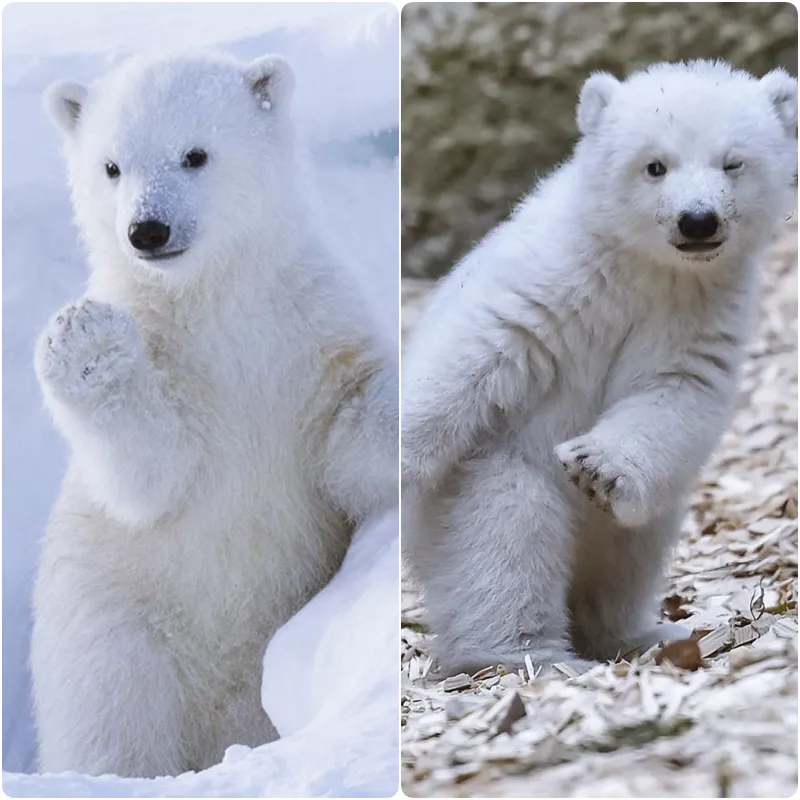
Polar Bears: The Icon of the Frozen Wilderness
Polar bears, also known as white bears, are iconic animals of the Arctic, thriving in a harsh but mesmerizing environment. With their large size, skilled hunting abilities, and majestic appearance, polar bears are among the most revered predators on the planet.

1. Biological Characteristics
The polar bear (Ursus maritimus) is the largest bear species in the world, with males weighing up to 700 kg and reaching lengths of up to 3 meters. Their thick white fur provides perfect camouflage in the snowy environment and helps insulate them against the extreme cold. Beneath the fur is a thick layer of fat that also provides insulation and energy reserves.
Although polar bear fur appears white, it is actually transparent and reflects light. Their skin is black, which helps absorb more heat from the sun.
2. Habitat
Polar bears primarily inhabit the icy regions surrounding the Arctic Ocean, including Canada, Russia, Greenland, Norway (Svalbard), and the United States (Alaska). They are perfectly adapted to the icy environment and are often found on floating ice, where they hunt and rest.
3. Diet
As top predators in the Arctic ecosystem, polar bears primarily eat seals. They are patient hunters, sometimes waiting hours or even days beside seal breathing holes in the ice to catch their prey as it surfaces. Seal blubber is a crucial source of energy, helping polar bears maintain their body heat and store energy for the long winter months.

4. Ecological Importance
Polar bears play a vital role in the Arctic ecosystem. They are not only top hunters but also help regulate the seal population, which in turn affects the entire food chain in the region. Any changes in the polar bear population can lead to imbalances in this delicate ecosystem.
5. Challenges Faced
Today, polar bears face numerous serious challenges, primarily due to climate change. Global warming is causing Arctic ice to melt rapidly, shrinking their natural habitat. This reduction in ice limits the polar bears’ ability to hunt, forcing them to travel further to find food. These changes affect not only the bears but the entire ecosystem they rely on.
Additionally, pollution and human encroachment into the Arctic regions also threaten the survival of polar bears. Pollutants in the food chain can accumulate in the bears’ bodies, leading to health and reproductive problems.
6. Polar Bear Conservation

Conservation organizations around the world are working to protect polar bears from the threat of extinction. Efforts include monitoring bear populations, protecting their habitats, and mitigating the impacts of climate change. Raising public awareness about the importance of polar bears and the Arctic is also a crucial part of these conservation efforts.
Conclusion
Polar bears are not only symbols of the frigid Arctic but also reminders of the fragility of ecosystems that we must protect. Conserving these bears is not just about saving a single species; it is about preserving the natural balance and maintaining biodiversity on our planet. The survival of polar bears depends on decisive human action to combat climate change and protect their natural environment.



